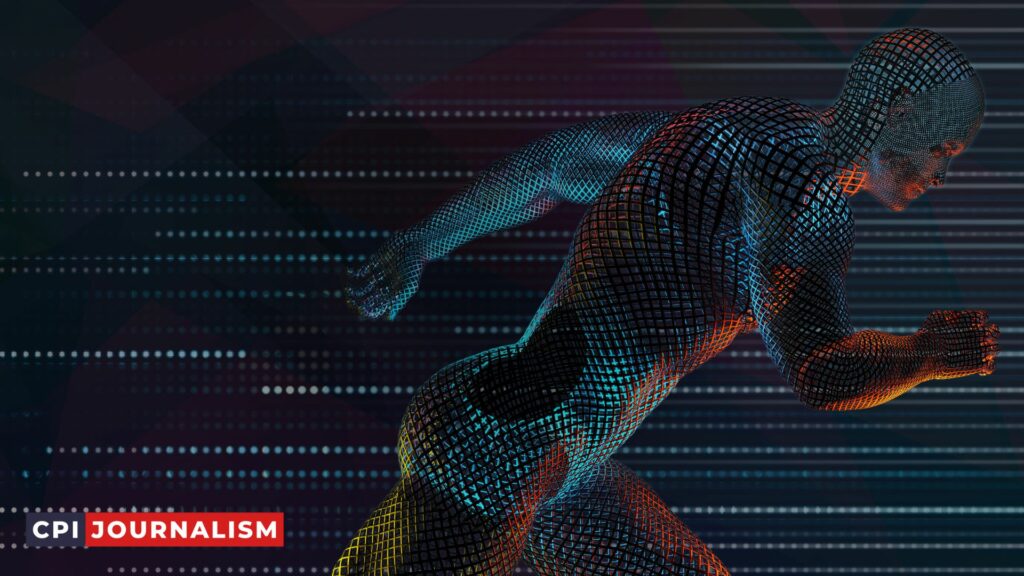How Can Sports Journalists Use Animation To Enhance Their Storytelling?
As an experienced sports journalist, I understand the importance of telling stories that capture the excitement, drama and emotion of the world of sports.
Animation can be an invaluable tool in enhancing sports journalism, enabling journalists to tell stories in vivid and dynamic ways.
In this article, I will explore how animation can be used to add depth and power to sports journalism and take storytelling to the next level.
A. Overview of How Animation Can Enhance Sports Journalism
Animation has the potential to revolutionize the way sports journalists tell stories. Animation not only provides a visual representation of the story but also allows journalists to bring more detail and depth to their stories.
Animation can be used to illustrate complex sporting events, highlight the skills and techniques of athletes, and to add a dynamic, entertaining element to sports reporting.
Animation can provide a more immersive experience for viewers and readers, allowing them to become more engaged with the story and better understand the context of the sport being reported.
Animations can also be used to break down the mechanics of a sporting event, allowing viewers to see the plays and strategies in a way that would be difficult to convey in words alone.
Animations can also be used to provide a unique perspective on a sporting event, allowing journalists to explore the different angles and nuances of a story. Animations can provide a visual representation of the emotions, atmosphere, and key moments in a sporting event, allowing readers to connect with the story on a personal level.
Finally, animations can be used to create a sense of excitement and anticipation for a sporting event.
By creating a dynamic, visually-appealing animation, journalists can create a sense of anticipation and excitement for the event, driving readership and creating a buzz around the event.
In short, animation has the potential to revolutionize the way sports journalists tell stories, allowing them to create a more engaging, immersive experience for their readers and viewers.
Animations can be used to provide a unique perspective on a sporting event, driving readership and creating a buzz around the event.
B. Benefits of Using Animation in Sports Journalism
Animation is an incredibly powerful tool for sports journalists and can be used to great effect to bring stories to life.
Animation allows journalists to better illustrate their points, highlight emotional moments, and create a more engaging experience for their readers. Here are a few of the benefits of using animation in sports journalism.
First, animation can be used to capture the action of a sporting event in a much more dynamic way than traditional video and photography. By animating the movements of players and the ball, journalists can create a much more immersive experience for their readers.
Animation also allows journalists to recreate historical moments that would otherwise be impossible to experience.
Second, animation can be used to create a much more emotionally engaging experience for readers.
Animations can capture the intensity of a moment and illustrate the emotions of the players and fans. This allows readers to feel a deeper connection to the story and to the players involved.
Finally, animation can be used to create more interactive experiences for readers. Animations can be used to create interactive infographics and other interactive elements that allow readers to explore the story in more depth.
This can be an incredibly powerful tool for sports journalists as it allows readers to dig deeper and explore the story for themselves.
In summary, animation is an incredibly powerful tool for sports journalists and can be used to great effect to bring stories to life. Animation allows journalists to better illustrate their points, highlight emotional moments, and create a more engaging experience for their readers.
With animation, sports journalists can create immersive experiences, emotionally engaging moments, and interactive elements that will bring their stories to life.
II. Types of Animation Used in Sports Journalism
The animation used in sports journalism can be divided into two main types: 2D animation and 3D animation.
2D Animation is the traditional animation style used in cartoons and feature films. It is a relatively basic type of animation but can still be used to great effect in sports journalism.
2D animation can be used to illustrate complex concepts and highlight key information, as well as to create eye-catching visuals that draw viewers in and make them more interested in the story.
3D Animation is the more advanced type of animation used in sports journalism. It can be used to create highly realistic visuals that simulate real-world environments, allowing viewers to feel like they are in the action.
3D animation can also be used to create engaging motion graphics that capture the excitement of the sports moment.
Both 2D and 3D animation can be used to enhance sports journalism by providing an engaging visual experience for viewers. The right type of animation can help to convey information more effectively and bring stories to life.
A. 2D Animation
2D animation is a great way for sports journalists to enhance their storytelling. This type of animation involves creating characters and environments that can be used to illustrate key points or to emphasize a particular story.
2D animation can be used to visualize difficult concepts, to show the action of a particular sporting event, or to help explain the story in a more engaging way.
2D animation can help sports journalists illustrate a story with more clarity, as it allows them to show the audience how the story evolved over time.
This can be done by showing the characters and their environment in different stages of the story. It also allows journalists to add visual elements like sound and color to help bring the story to life.
2D animation can also be used to add emotive elements to a story. By adding facial expressions, body language, and other visual cues, journalists can create a connection with their audience and make the story more relatable.
This type of animation can also help bring out the human element of a story by emphasizing certain characters or showing their struggles in a particular situation.
Overall, 2D animation can be a powerful tool for sports journalists looking to enhance their storytelling. It allows them to illustrate their stories with more clarity and add emotional elements that can help engage the audience.
B. 3D Animation
3D animation is a powerful tool that sports journalists can use to enhance their storytelling. It allows them to create realistic, entertaining visuals that can help to engage readers in their stories.
3D animation can be used to create dynamic visuals that can help to communicate important information about the story. This can include replays of key moments in a game, or simulations of how a certain play might have unfolded.
It can also be used to create detailed visualizations of key players or teams, helping to give readers a better understanding of the story.
3D animation also allows journalists to create visuals that are more visually appealing and engaging. For example, they can use 3D animation to create detailed characters and environments, or to create dynamic transitions between different scenes.
This can help to capture the attention of readers and keep them engaged in the story.
Overall, 3D animation is a powerful tool that can help sports journalists to engage readers in their stories and to communicate important information in a visually appealing and entertaining way.
C. Motion Graphics
Motion graphics are a great way for sports journalists to enhance their storytelling. Motion graphics provide a way to visually explain concepts and stories in a dynamic way that is engaging and memorable.
They can be used to make complex topics easier to understand, and they can also be used to create an immersive experience for readers.
Motion graphics can be used to create animations that can explain team tactics, highlight individual players’ performances, or show the results of a match.
They can also be used to create infographics that show the history of a team or player, or to create a timeline of events. Motion graphics can be used to create interactive elements, such as interactive maps that can be used to illustrate the routes of players on the field.
Motion graphics can also be used to create visual effects, such as a ball in motion or a game-winning shot.

They can be used to create stunning visual effects that will capture the attention of the reader. Motion graphics can also be used to create engaging videos that will help to bring a story to life.
Motion graphics can also be used to create a sense of drama and excitement in a story. By creating a visual representation of the story, the reader can feel as if they are part of the action.
Motion graphics can also be used to create virtual reality experiences that will allow readers to experience the story in a more immersive way.
All in all, motion graphics are a great way for sports journalists to enhance their storytelling. They can be used to create visual effects, interactive elements, and even virtual reality experiences that will help to bring a story to life.
III. Examples of Animation Used in Sports Journalism
Animation can be a powerful tool for sports journalists to tell stories and captivate their readers. Animation can be used to illustrate a variety of topics and stories related to sports, from game highlights to the evolution of a team or player’s career.
Here are a few examples of how animation can be used in sports journalism:
1. Highlighting a Player’s Performance: Animation can be used to visually illustrate a player’s performance over the course of a game or season.
For example, a journalist could use animation to show a player’s field goal percentage, or to break down the player’s stats in terms of assists, rebounds, and points.
By using dynamic animation, the journalist can provide a more comprehensive and engaging look at a player’s performance.
2. Showing Team Evolution: Animation can also be used to show the evolution of a team or player’s career. For example, a journalist can use animation to show the team’s performance over the course of the season, or to illustrate how a player’s stats have changed over the course of their career.
By providing an interactive and visual representation of these changes, the journalist can give readers a better understanding of the team or player’s development.
3. Explaining Plays: Animation can also be used to explain complex plays and strategies. For example, a journalist can use animation to illustrate how a particular play unfolded, or to show the various components of a team’s offensive or defensive strategy.
By using animation, the journalist can provide a more comprehensive and engaging look at the play or strategy.
Overall, animation can be a powerful tool for sports journalists to tell stories and captivate their readers. By using animation, a journalist can provide a more comprehensive and engaging look at a team or player’s performance, as well as explain complex plays and strategies.
A. ESPN’s “SportsCenter”
Animation can be a powerful tool for sports journalists, and ESPN’s “SportsCenter” is a great example of how animation can be used to enhance storytelling.
SportsCenter has employed animation in many of its segments, from creating graphical representations of plays and game highlights to crafting special effects to show scores and statistics.
Animation allows for a greater level of detail and accuracy than live-action footage, and it can be used to illustrate events and concepts that are difficult to show using traditional video.
For example, SportsCenter has used animation to create a virtual reality of a game, allowing viewers to feel like they’re part of the action.
It also uses animation to break down plays and show how teams and players interact on the field. This helps viewers to better understand the strategies and tactics used by teams and players, and makes the viewing experience more enjoyable.
Animation can also be used to bring stories to life. SportsCenter has used animation to tell the stories of players and coaches, providing viewers with a more personal look at how their favorite teams and players operate.
Animation can also be used to create a more immersive experience. SportsCenter often uses animation to create a sense of atmosphere and excitement, such as when they show the crowd cheering or the players celebrating after a big win.
This helps to bring viewers into the game and makes them feel like they’re part of the action.
Overall, animation is a powerful tool that can be used to enhance the storytelling of sports journalists. By taking advantage of the potential of animation, sports journalists can create more engaging and immersive stories that will draw viewers in and keep them coming back for more.
B. The New York Times’ “The Upshot”
The New York Times’ “The Upshot” is an example of how animations can be used in sports journalism. The Upshot is a digital feature that combines data-driven analysis and narrative storytelling to illustrate in-depth sports trends and stories.
They use animation to provide a visual representation of their data, making it easier for readers to understand complex topics and stories.
For example, The Upshot used animation to illustrate the changing landscape of the NBA over the past decade. Through animation, they showed how teams have improved or declined in terms of their wins and losses, as well as how the league’s average age has changed.
This type of animation is powerful because it allows readers to clearly see the data and trends, making them easier to understand and interpret.
Animations can also be used to explain the rules of a sport, and to provide a visual representation of the strategies and tactics used by teams or players.
For example, The Upshot used animation to illustrate the various defensive strategies used in basketball, such as switching and trapping. By animating the strategies, readers are able to visualize the different strategies and how they work in a game.
Animations can also be used to show the impact of individual players. For example, The Upshot used animation to show how LeBron James changed the fortunes of the Cleveland Cavaliers when he joined the team in 2014.
By animating the team’s performance before and after James joined, readers are able to more easily understand the impact that one player can have on a team.
Overall, animations can be a powerful tool for sports journalists looking to enhance their storytelling. Animations can be used to illustrate data, explain rules, and show the impact of individual players.
Animations provide a visual representation of data and stories, which can be easier for readers to understand and interpret.
C. The Washington Post’S “The Post Sports Live”
The Washington Post’s “The Post Sports Live” is an excellent example of how a sports journalist can use animation to enhance their storytelling. Through this show, The Post Sports Live team has been able to showcase the latest news in the sports world in a visually engaging way.
The Post Sports Live team uses a combination of visuals such as graphics, animation, and live footage to bring the latest stories to life in an interesting and engaging way.
They also use motion graphics to highlight key points and data, while also providing viewers with an interactive experience. The team also takes advantage of animation to bring their stories to life, often creating short videos and animations to illustrate stories in a visually interesting way.
In addition to animation, The Post Sports Live team has also used augmented reality to bring the sports world to life.
They have used augmented reality to provide viewers with a more immersive experience, allowing them to explore the latest sports news in a more interactive and engaging way.
Overall, The Post Sports Live team is an excellent example of how a sports journalist can use animation to enhance their storytelling.
Through the use of animation, augmented reality, and other visuals, The Post Sports Live team has been able to create an engaging and interactive experience for viewers.
IV. Benefits of Using Animation in Sports Journalism
Animation can be a powerful tool for sports journalists to elevate their storytelling. By using animation, journalists can create dynamic visual stories that bring their content to life.
Here are some of the benefits of using animation in sports journalism:
1. Increase Engagement: Animation can help capture and hold the attention of the audience. Sports stories can be made more engaging with the use of animation, allowing journalists to effectively communicate their ideas and messages.
2. Enhance Visuals: Animations can be used to create visuals that are more impactful than static images. Animation can also help to make complex topics easier to understand by breaking them down into visual elements.
3. Expand Reach: Animation can be used to create videos or GIFs that can be shared on social media platforms. This helps to expand the reach of the story and engage a larger audience.
4. Tell Complex Stories: Animation can help to tell complex stories that may be difficult to convey through text or audio. Animations can be used to illustrate the events of a story in an easy-to-understand visual format.
Using animation in sports journalism can help to increase engagement, enhance visuals, expand reach, and tell complex stories.
Animation can be used to bring a story to life in a way that static images cannot. By using animation, sports journalists can create dynamic visual stories that captivate their audience.
A. Increased Engagement
Animation is a powerful tool for sports journalists to engage readers and viewers. Animation can be used to illustrate the action of a game or highlight the performance of a player, allowing readers to visualize the game in a way that would be impossible with traditional media.
Animation can also be used to add a sense of excitement and suspense to a story, increasing reader engagement and making the story more memorable.
In addition, animation can be used to explain complex concepts or tactics. By using animation to break down difficult concepts, sports journalists can help readers understand the sport in a more comprehensive way.
Animation can also be used to highlight the most important elements of a story, allowing readers to quickly grasp the most important points.
Finally, animation can be used to add a unique flair to sports journalism. By using animation, journalists can create stories that stand out from the competition and capture the attention of readers.
Animation can also be used to showcase a journalist’s creative flair and make their stories more memorable.
B. Improved Visualization
Visualization is one of the most powerful tools for sports journalists, allowing them to communicate their stories in an engaging and effective way.
Animation can be used to create an immersive experience for the audience and to present complex topics in a simple and understandable way.
Animation can be used to show the progress of a match, to visualize the movements of athletes, or to present fascinating facts in an easy-to-understand format.
Animation can also be used to emphasize key events or points of interest. For example, when narrating a basketball game, the journalist could use animation to show the movements of the players on the court, or to highlight a particularly impressive basket.
Animation can also be used to illustrate the tactical decisions a coach makes during a game, or to provide viewers with a better understanding of the rules of a particular sport.
Animation can also be used to tell stories in a more creative and dynamic way. For example, the journalist could create a montage of different clips to illustrate a team’s journey to victory, or to show the evolution of a particular athlete’s career.
Animation can also be used to bring statistics to life, allowing the journalist to present complex numerical data in a visually-appealing way.
By using animation, sports journalists can bring their stories to life, captivating their audience and providing a more immersive experience. Animation can help to make the stories more engaging and to convey complex topics in a simple and understandable way.
C. Enhanced Storytelling
Animation is an incredibly powerful tool for sports journalists to enhance their storytelling. Animation can help to bring stories to life and provide an engaging visual experience for readers.
Animation can be used to illustrate complex concepts in sports, such as a play-by-play description of a goal in a soccer match. By creating a visual representation of the action on the field, readers can get a better understanding of the play, making it easier for them to follow the narrative.
Animation can also be used to create compelling visuals for sports stories. Animations can be used to show the trajectory of a ball as it moves across the field, giving readers an idea of the action as it happens.
This can be an effective way to bring life to a story, and can help readers to connect with the story on a deeper level.
Finally, animation can be used to provide an engaging, interactive experience for readers. Animations can be used to allow readers to explore the story in more depth, and to interact with the story in a way that they wouldn’t be able to with traditional storytelling methods.
This can help to create a more immersive and engaging experience for readers, and can ultimately lead to a more enjoyable reading experience.
V. Challenges of Using Animation in Sports Journalism
Using animation in sports journalism can be a complex process that requires both technical and creative skills. While animation can be a powerful tool for storytelling, it also presents a range of challenges and potential pitfalls.
Here are some of the main challenges of using animation in sports journalism.
1. Cost and Accessibility: Animation can be costly to produce, requiring specialized software and equipment, as well as trained personnel. This makes it difficult for smaller publications or organizations to take advantage of animation in their storytelling.
2. Time: Animation is a time-consuming process, requiring extensive research and planning, as well as the creative input of an animator or team. This means that animation is not necessarily a viable option for breaking news or stories that require a quick turnaround.
3. Technical Knowledge: To effectively use animation, journalists must have a good understanding of the animation software and technology that they are using. This can be a difficult and time-consuming process, and is not always practical.
4. Creative Limitations: Animation is a creative process, and there are often limits to what can be achieved with animation. This can be a challenge when attempting to accurately convey complex stories or concepts.
Despite these challenges, animation can be a powerful tool for sports journalists to enhance their storytelling and engage their audiences.
By understanding the challenges and potential pitfalls associated with animation, sports journalists can use this technology more effectively and create compelling stories.
A. Cost
Animated videos can be a great way for sports journalists to enhance their storytelling, but there are costs associated with creating and using them.
Depending on the complexity of the animation, the cost can range from several hundred to several thousand dollars. Additionally, the cost of hiring an animator or animation company must be factored into the overall cost.
That being said, it is possible to create animation without breaking the bank. There are a number of online tools that allow users to create simple but effective animations with minimal cost.
While these tools can help to keep costs down, they can also limit the complexity and quality of the animation.
In order to get the most out of animation, it is often worth investing in professional animators who can create high-quality animations.
This can be expensive, but the results can be stunning and well worth the investment. As such, it is important for sports journalists to consider the cost of animation when deciding whether or not to use it in their storytelling.
B. Time
Time is an essential element for sports journalists utilizing animation to enhance their storytelling. Animation enables journalists to tell their stories in a more engaging and interactive way, but it can also be extremely time consuming.
It can take anywhere from a few hours to several days to create a single animation, depending on its complexity.
Therefore, it is important for journalists to plan ahead and be organized when it comes to animation. It is beneficial to create a timeline that outlines when each step of the animation process must be completed in order to meet the final deadline.
This timeline should include the amount of time it will take to create the animation, as well as additional time for revisions and feedback.
Time management is especially important when working with an illustrator or animator. It is essential for journalists to provide clear direction and feedback to the illustrator or animator in order to ensure that the animation is completed in a timely manner.
Additionally, journalists should be mindful of their illustrator or animator’s other commitments and allow for adequate time for them to complete the animation.
Animation is a powerful tool for sports journalists, but it is also time consuming. With careful planning and effective time management, journalists can create compelling animations that will engage their audience and enhance their story.
C. Technical Knowledge
For sports journalists looking to use animation to enhance their storytelling, it’s important to have a solid foundation of technical knowledge.
Animations can range from basic graphics to complex 3D models, so it’s important to have an understanding of the software and tools available to create these animations.
The most popular animation software for sports journalists is Adobe After Effects. After Effects is a powerful program used to create motion graphics, visual effects, and 3D animations.
With After Effects, sports journalists can create stunning visuals and complex animations that can bring their stories to life.
Sports journalists should also familiarize themselves with video editing software such as Adobe Premiere Pro. Premiere Pro is used to edit video footage and audio, and can be used in combination with After Effects to create animations.
Finally, sports journalists should also be familiar with web development tools such as HTML, CSS, and JavaScript. These tools are used to create interactive animations that can be shared online.
With the right technical knowledge, sports journalists can create unique and engaging animations that will capture the attention of their readers.
VI. Conclusion
In conclusion, animation is a powerful tool in the hands of sports journalists, allowing them to tell stories in a unique and engaging way.
Animations can be used to illustrate complex topics, add a visual element to highlight key points, and even to bring stories to life. Animation can be used to create an immersive experience for viewers, enabling them to better understand and connect with the content they are viewing.
Animation should be used strategically to enhance the storytelling process. It is important to consider the audience and how they will interact with the content before creating an animation.
Animation should also be used to reinforce the points being made in the story, rather than distract from them.
Ultimately, animation can be an invaluable asset for sports journalists looking to create compelling and engaging stories. Through the use of animation, journalists can create stories that are visually appealing, informative, and entertaining.
A. Summary of How Animation Can Enhance Sports Journalism
Animation is a powerful tool to add a visual element to sports journalism, allowing journalists to better engage their audience and create more compelling stories.
Animation can be used to illustrate the action taking place in a game, explain the strategies and techniques used by athletes, and bring to life statistics and data points in a way that can be easily understood by viewers.
Animation can also be used to create highlights and replays of key moments in a game, providing a unique perspective to the story.
Furthermore, animation can be used to bring a sense of movement and energy to sports journalism, creating a more interactive experience for the viewer.
Animation can also be used for illustration, allowing journalists to provide an informative and entertaining visual to accompany their stories. Finally, animation can be used to create dynamic graphics to help viewers interpret the data and make sense of the story.
In summary, animation can be a powerful tool to enhance sports journalism, helping journalists to create stories that are visually engaging, informative, and entertaining.
B. Final Thoughts on the Benefits of Animation in Sports Journalism
Animation has become an increasingly popular tool for sports journalists to enhance their storytelling. It’s an effective way to bring stories to life, while also increasing audience engagement.
Animation can also be used to simplify complex topics and help viewers better understand the game. Finally, animations can be used to illustrate player and team strategies, as well as provide a unique perspective on the sport.
When used effectively, animation can be a powerful tool for sports journalists to bring stories to life, engage their audience and help simplify complex topics. Animation is a great way to make stories more interesting and informative for viewers.
Additionally, animations can provide an engaging visual element to stories that can be difficult to capture with traditional media. Finally, animation can help viewers better understand the game and strategies involved.
Overall, animation is an invaluable tool for sports journalists. It can help to make stories more interesting and engaging, while also increasing audience engagement.
Animation can also help to simplify complex topics and provide a unique perspective on the sport.
By utilizing animation, sports journalists can help to make their stories more impactful and memorable.







